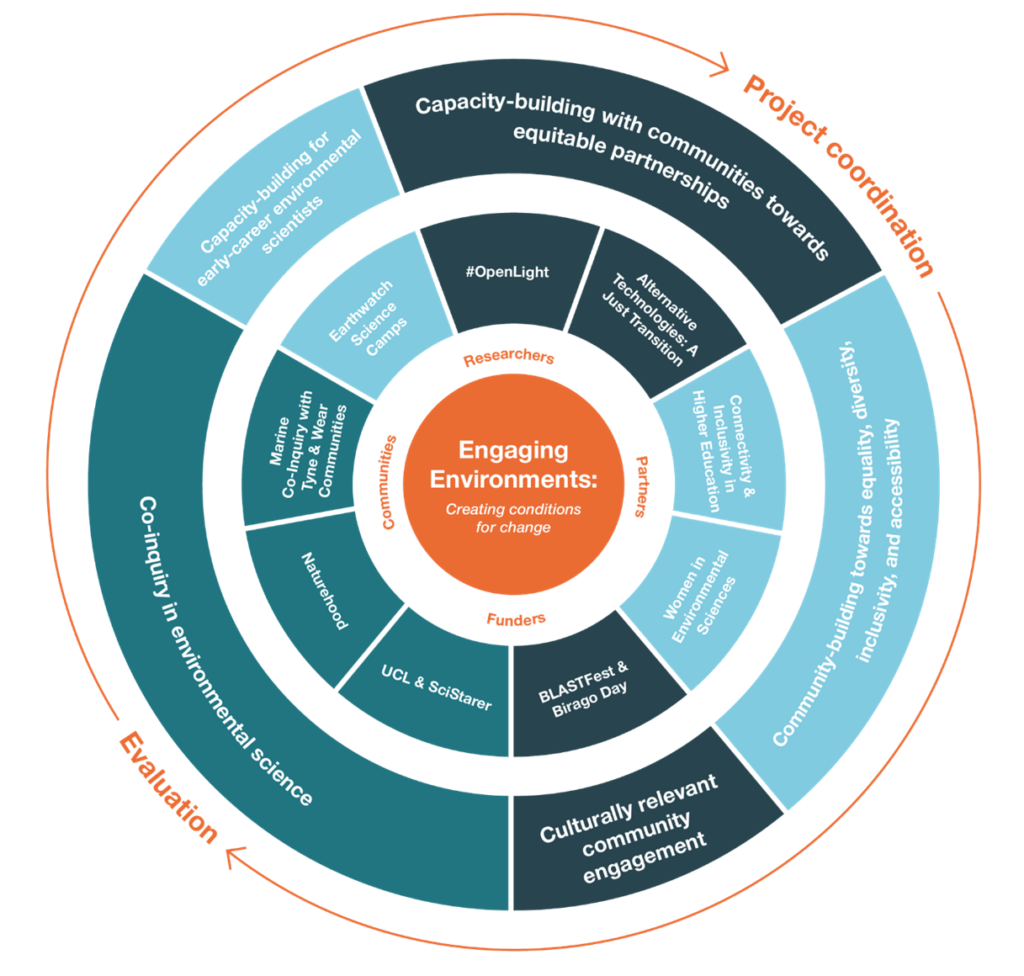About

Our Purpose
In response to the climate emergency and the intersectional challenges of environmental and social justice, Engaging Environments (EE) sought to build the capacity of environmental scientists and diverse communities to work towards equitable partnerships that help reduce the impact of the climate and biodiversity crisis on the most affected people and places.
The climate crisis is inextricably linked to histories and legacies of colonialism, capitalism, industrialisation, patriarchy, and systemic forms of oppression. For the EE project team and community partners, public engagement with environmental science had to be boldly reimagined as a collective practice and joint endeavour. The project surfaced a desire to challenge the status quo of top-down approaches to environmental science and research, and the legacies of these histories.
We need to create the conditions which make equitable partnerships the norm, improve funding structures, deliver culturally relevant and responsive public engagement and research, and bridge the equity gap across research and higher education.
The Partnership
EE was a partnership between Higher Education Institutions (HEIs), diverse communities, cultural partners, SMEs and critical friends, including University of Reading, University of Manchester, University of Newcastle, University of West England Bristol, UCL, The Open University, Earthwatch Europe, BLASTFest, Watershed, Tekiu Ltd, Ignite!, SciStarter, National Association of Disabled Staff Networks (NADSN).
A Project of Projects
The project co-ordinated activities and allocated funding to the various project communities around the country for distinct programmes of work in various regional settings. Projects focused on listening, learning, and developing common principles, values, and practices of co-creation and co-inquiry, equitable partnerships, capacity-building, and community engagement (see project diagram). The partnership also offered mutual learning and knowledge exchange opportunities between local project communities to help shape practice around the country.

Through these various activities, EE sought to investigate inclusive research practices, addressing inherent power dynamics, the creation of safe and inclusive spaces, accountability processes, and the identification and break down of barriers to public engagement with environmental science.